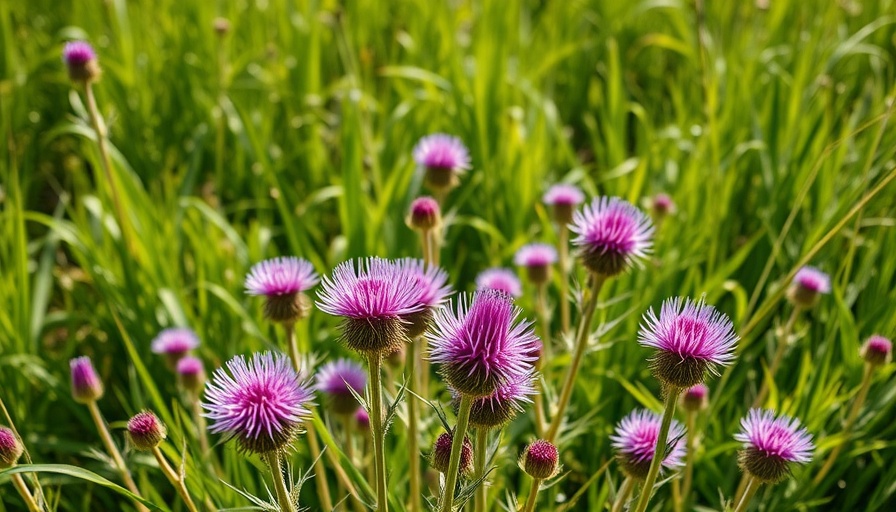
Understanding the Weeds: What Makes Them So Difficult?
Weeds are often viewed as nature's relentless intruders in our gardens, but do we fully grasp the complexity behind their resilience? Defined as wild plants growing where they're not wanted, weeds thrive in a range of environments, often outcompeting cultivated plants for resources. Some of the most persistent varieties are built for survival, possessing quick reproductive cycles and adaptive roots. This duality of beauty and challenge compels many homeowners to wage continuous battles against them.
Meet the Top Challengers: Common Persistent Weeds
Among the myriad of weeds gardeners face, the following have proven particularly notorious:
- Field Bindweed - This pretty invader, with its delicate pink flowers, conceals an extensive root system capable of extending deep underground, making it a formidable foe for any gardener.
- Dandelion - Though often dismissed as just a nuisance, dandelions boast roots that can penetrate over 10 inches deep, making removal particularly challenging.
- Perennial Pepperweed - Known for its ability to spread rapidly through seeds and rhizomes, this invasive weed chokes out gardens faster than many can react.
Learning from Nature: Exploring the Value of Weeds
Interestingly, some weeds hold intrinsic ecological value. Native species, for instance, often provide vital habitats for pollinators and other wildlife. Rather than solely viewing them as pests, gardeners might consider their role in sustaining local ecosystems. This understanding can shift perspectives, paving the way for more sustainable gardening practices.
The Importance of Prevention: Managing Weeds from the Start
While eradication is crucial, prevention might be even more critical. Homeowners planning to start a backyard planting box or construct outdoor soil beds should prioritize robust soil health. Healthy gardens offer better resistance to weeds, thereby minimizing the chances of an invasive takeover. Utilizing mulch, practicing crop rotation, and timely removal of small weeds can set the stage for successful gardening.
Strategies for Effective Weed Management
To combat these persistent weeds, consider implementing several strategies:
- Manual Removal: While labor-intensive, manually pulling weeds, particularly when the soil is damp, can help eliminate their root systems effectively.
- Mulching Techniques: A thick layer of mulch not only enhances aesthetics but also suppresses weed growth, making it an excellent option for those building elevated planter boxes.
- Herbicides: For a more aggressive approach, certain herbicides, when used correctly, can target specific weeds without damaging nearby plants.
Tools for Weeding Success
Efficient gardening often comes down to the right tools. Using specialized weeding tools, such as the CobraHead weeder, can make the arduous task of removing persistent weeds simpler and more effective. Investing in quality tools pays dividends in reduced effort and time spent battling invasive plants.
Embracing Local Expertise and Resources
For Muskegon area residents looking to bolster their gardening efforts, local resources abound. Whether it's community workshops focusing on sustainable landscaping or professional lawn care services like Norther-LawnCare.com, there are vast avenues for support. Collaborating with experts can help you navigate the complexities of local flora and manage resources optimally.
In conclusion, despite the frustrations that weeds bring to our gardens, understanding their nature and implementing proactive strategies can allow us to reclaim our green spaces. For personalized support, including lawn care and property management services catered to your unique needs, please contact Everett Lucas at Norther-LawnCare (231-450-3414). Together, let’s cultivate thriving gardens while effectively managing stubborn weeds.
 Add Row
Add Row 
 Add
Add 


Write A Comment